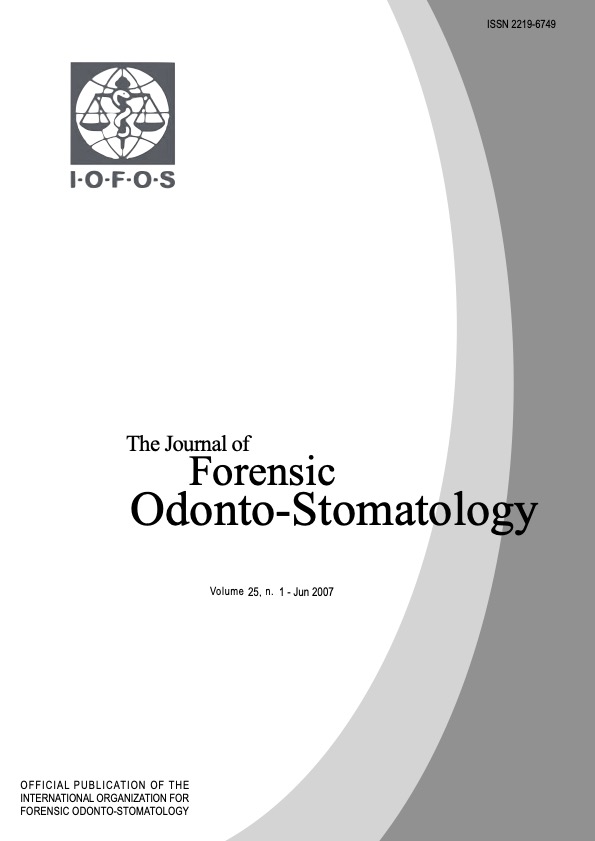Evaluation of two dental identification computer systems: DAVID and WinID3
Abstract
Human identification, by comparing dental characteristics, is considered to be one of the most reliable, accurate and rapid methods of resolving the identity of visually un-identifiable deceased persons. In recent decades computer programs have evolved to aid odontologists by suggesting records that have similar dental features. The aim of the present study was to compare two of those programs; Disaster And Victim IDentification (DAVID) and WinID3 in terms of effectiveness, accuracy and speed of data entry and to further compare them with the efficiency of the classical method of manually matching postmortem and antemortem dental records. An open disaster was simulated whereby 52 fragmented remains made of acrylic replicas and 77 provisional victims were represented on Interpol F2 postmortem and antemortem forms. The results assessed were the first seven possible matches made by each program. Manual matching of dental characteristics performed better than both programs (P<0.001) yielding 29 identifications. Eleven and six positive matches were the result of the DAVID and the WinID3 programs respectively (P=0.185). Data entry was quicker for WinID3. It was concluded that both programs are still not as accurate as the time-consuming manual matching method. The difference in performance between the DAVID and the WinID3 programs was attributed to the inclusion of more comparable dental characteristics, the inclusion of the type of dentition (deciduous or permanent) and the weighting of those characteristics by the DAVID program.

